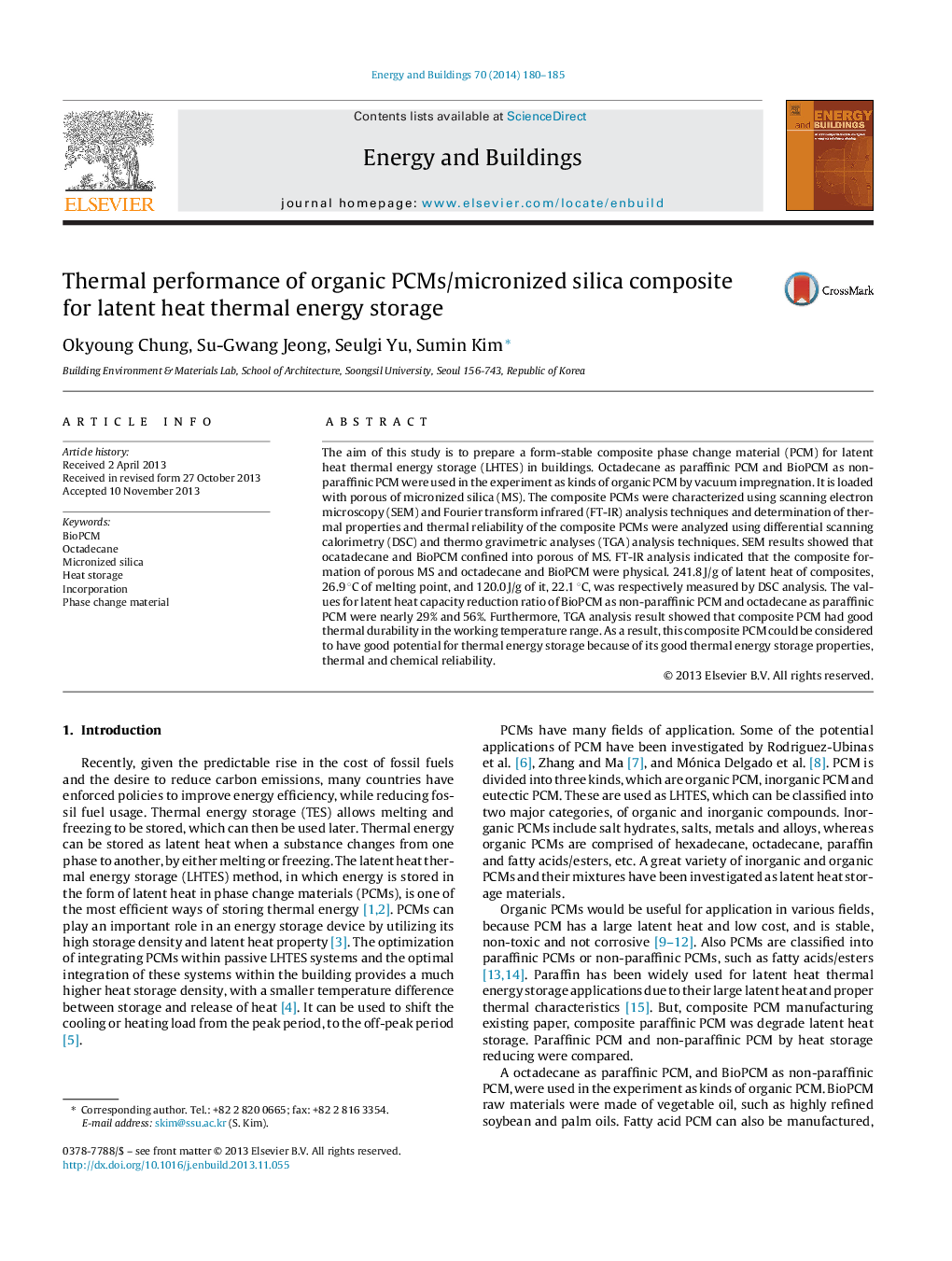| Article ID | Journal | Published Year | Pages | File Type |
|---|---|---|---|---|
| 263063 | Energy and Buildings | 2014 | 6 Pages |
•To compare octadecane as paraffinic PCM and bio-based PCM as non-paraffinic PCM.•Two types of liquid PCM as organic PCMs loaded with micronized silica.•To determine an enhancement of the thermal resistance of PCMs.
The aim of this study is to prepare a form-stable composite phase change material (PCM) for latent heat thermal energy storage (LHTES) in buildings. Octadecane as paraffinic PCM and BioPCM as non-paraffinic PCM were used in the experiment as kinds of organic PCM by vacuum impregnation. It is loaded with porous of micronized silica (MS). The composite PCMs were characterized using scanning electron microscopy (SEM) and Fourier transform infrared (FT-IR) analysis techniques and determination of thermal properties and thermal reliability of the composite PCMs were analyzed using differential scanning calorimetry (DSC) and thermo gravimetric analyses (TGA) analysis techniques. SEM results showed that ocatadecane and BioPCM confined into porous of MS. FT-IR analysis indicated that the composite formation of porous MS and octadecane and BioPCM were physical. 241.8 J/g of latent heat of composites, 26.9 °C of melting point, and 120.0 J/g of it, 22.1 °C, was respectively measured by DSC analysis. The values for latent heat capacity reduction ratio of BioPCM as non-paraffinic PCM and octadecane as paraffinic PCM were nearly 29% and 56%. Furthermore, TGA analysis result showed that composite PCM had good thermal durability in the working temperature range. As a result, this composite PCM could be considered to have good potential for thermal energy storage because of its good thermal energy storage properties, thermal and chemical reliability.
